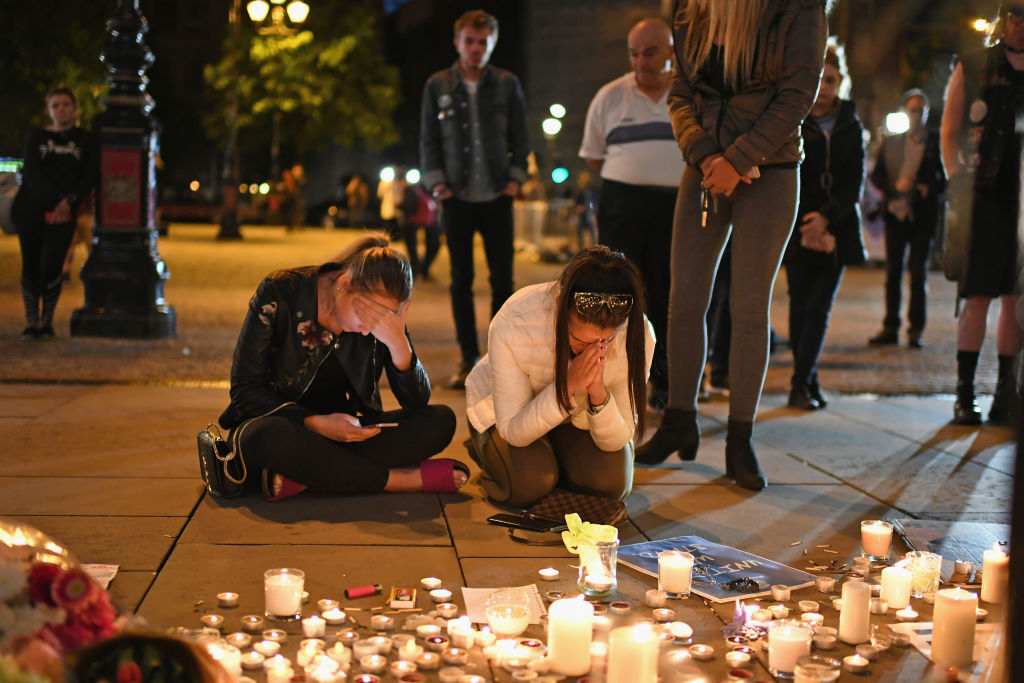There has been an unprecedented development this year in the Islamists’ war on the West. For the first time their foot soldiers are singling out women to kill. Women have been the victims of terrorism before, murdered by paramilitary organisations such as ETA, the Ulster Volunteer Force and the IRA, because of their uniform or their beliefs, or simply because they were in the wrong place at the wrong time, but never solely because of their sex.
In the era when Islamic terror groups hijacked aircraft it was rare that women were harmed. When a Trans World Airlines jet was hijacked in 1985, for example, the terrorists released all the women and children, including the Americans. When a similar fate befell an Air France airliner at the same airport in Algiers nine years later, the Islamists handed out veils to the females passengers but executed only male hostages.
But this year Islamists are specifically targeting women. When Salman Abedi detonated his suicide bomb at the Ariana Grande concert in May, killing seventeen females (and five males), he did so knowing it would be full of teenage girls and young women. In July, two German women were fatally stabbed by an Egyptian man at the Red Sea resort of Hurghada. This attack bore similarities to Saturday’s outrage in the Finnish city of Turku, where an 18-year-old Moroccan allegedly stabbed eight women, two of whom died. Two days earlier, the only fatality in an Islamist attack at Cambrils was a 61-year-old woman.
The Islamists are deliberately targeting women because in their minds they represent empowerment and enlightenment, and also immodesty. Three young women were among the eight people stabbed to death during the London Bridge attack in June, and many more were wounded, including an Australian, who recalled her attacker screamed “Stop living this life” as he slashed at her throat.
In the hundred years since female emancipation began gaining momentum in the West, there have been significant reactions in the Islamic world. The first was the creation in Egypt of the Muslim Brotherhood in 1928, its founder, Imam Hassan al-Banna, demanding an “Islamic renewal” faced with creeping Western influence. Al-Banna wasn’t a fan of the West, especially not Mae West, nor Jazz or bobbed haircuts, raging against the importation of “half-naked women into these regions, together with their liquors, their theatres, their dance halls, their amusements, their stories, their newspapers, their novels, their whims.”
One of the Brotherhood’s most influential figures in the post-war period was Sayyid Qutb, an Egyptian who went to the USA on a year’s scholarship in 1949 and returned home radicalised. Another World War had imbued a fresh generation of young western women with confidence and Qutb was disgusted by the female students he encountered in Colorado. He wrote of attending a dance where “the room convulsed with the feverish music…dancing naked legs filled the hall, arms draped around the waists, chests met chests, lips met lips”.
But the 1940s generation was conservative compared to what came in the 1960s, the Sexual Revolution created a cultural earthquake, the tremors of which were felt in the Middle East. In Egypt, Afghanistan and across the region women let their hair down, literally, doing away with headscarves and dressing in mini-skirts. In Iran, the Shah gave women the vote and encouraged them to get a good education. The result was another Revolution, this one Islamic: Ayatollah Khomeini coming to power in 1979 and immediately stripping women of their rights.
Which brings us to the fourth seminal moment, the spread throughout Europe of Salafism, the ultra-conservative strand of Islam inspired by 7th Century Arabia. Salafism took root in Europe twenty years ago, propagated in France by the country’s Algerian diaspora. In the same period, Western Europe experienced the ‘Girl Power’ phenomenon, the emergence of an assertive generation of young women for a new millennium. Girl Power and Salafism were never going to harmonise, not when the latter exhorts women “to recognise the importance of modesty and realise the evils of nakedness”.
Nowhere is the effect of Salafism in Europe more evident than in France. In 2002, a group of French Muslim women launched a feminist movement called Ni Putes Ni Soumises (Neither Whores nor Submissives) in reaction to the growing violence being inflicted upon them, which ranged from verbal abuse to gang rape. The violence has not only continued – it has expanded, prompting the noted French feminist philosopher and writer, Élisabeth Badinter, to warn in a recent interview of a “regression” in women’s rights. This week, a report in France revealed that topless bathing, once de rigueur, is a thing of the past with only 22 per cent of women under 50 daring to strip, compared with 43 per cent in 1984. Francois Kraus, whose company conducted the survey, told Le Figaro that “the risk of physical or verbal intimidation” was a factor in the decline, adding that other surveys revealed women “no longer dared to wear mini-skirts or low-cut dresses on public transport”
Salafism’s influence has also spread to Germany where, after the mass sexual assault in Cologne on New Year’s Eve 2015, one of the city’s Salafist imams blamed the women. “If they’re half-naked and wearing perfume, it’s not surprising that such things would happen,” he said. “For some North Africans, this was reason to grope the women”.
Groping is not restricted to any one race or religion, as the world saw last week when Taylor Swift won her court case against a DJ – a victory one British columnist described as a ‘punch-the-air moment for girls’. Which it was, and not just for girls but for civilised society as a whole. However, that was just a small victory for western women and the biggest battle lies ahead, against an ideology that regards female empowerment as an evil that must be eradicated.
Gavin Mortimer is a writer and historian who lives in Paris







Comments